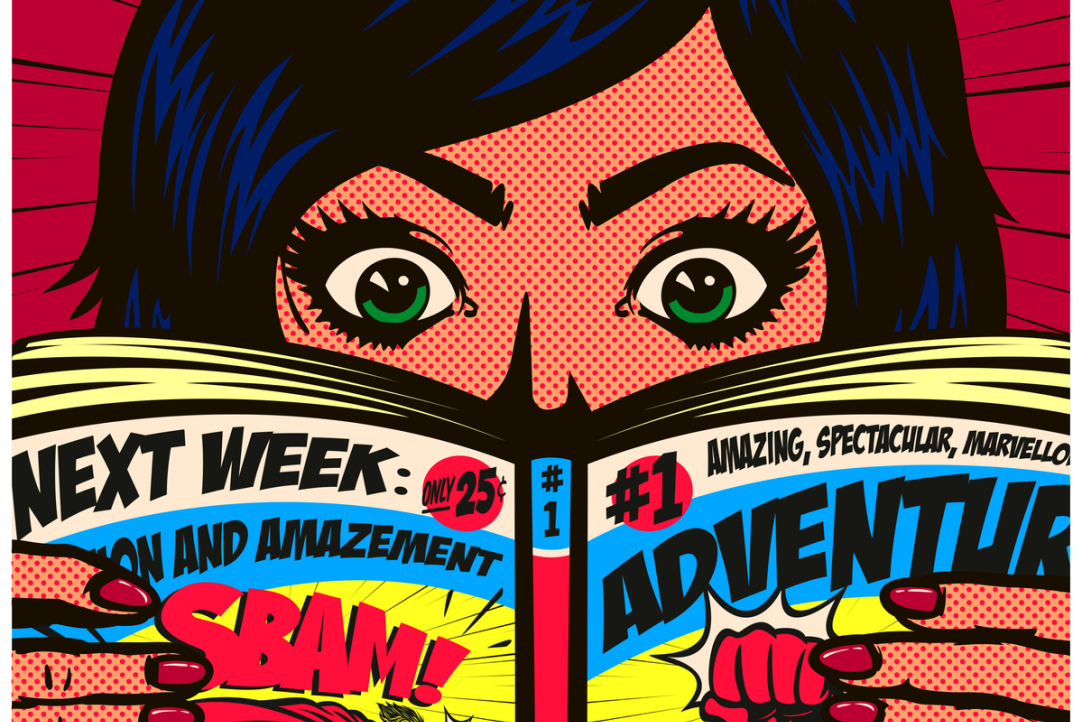Comics: From the Middle Ages to the 21st Century

The 8th Russian Comics Conference ‘The World of Comics’, organised by the HSE Institute for Oriental and Classical Studies, took place online in March 2023. Over the two days of the conference, 44 comics researchers from Russia, France, China, and Malaysia presented their papers on comics history, narratives, visuals, and animation.
The 2023 conference opened with the presentation ‘Rodolphe Töpffer: Founder of the Comic Book?’ by Daria Martynova from St Petersburg University. The first section was dedicated to ‘protocomics’ such as medieval Russian parables about animals and 18th-century splint pictures, illustrated magazines and magic lantern slides of the 1880s, Soviet-era ROSTA Windows and contemporary memes.
For the first time, this year’s conference included a section on female comics. It started with a paper by Saqifah Azlan from Ryukoku University, who talked about the “boys’ love” (BL) comics genre, and continued with papers on comics by female artists from Japan, Korea, and Latin America.

Saqifah Azlan, PhD student from Malaysia under the Japanese Government's MEXT scholarship at the Graduate School of International Studies, Ryukoku University
I participated in the conference with the paper ‘Character Distinction and Situated Affect on BL Manga Covers’. My research is dedicated to exploring the commercial aspect of manga from how producers strategically ‘sell’ a genre to readers within a single page, ie the covers. My presentation shared how titles that use character monologues have a communicative function that aligns with the visual strategies on the covers. I also showed that the two character roles specific to the genre afford different kinds of affect, which allow you to distinguish them from how they express themselves. This not only makes the title representational, but also carries interactional meanings that resonate with readers.
I’m currently focused on completing the pilot study for my PhD project that explores the role of titles and character visuals on BL manga covers with the aim of publishing my first research article. Once that is completed, I will explore the research questions for each aspect in more detail to understand their relationship and connect it to the commercial context. At the moment, I am in the process of preparing to conduct interviews with manga editors to validate my findings.
At the conference, it was interesting to see presentations on different types of comics and the different lenses through which they can be explored. As someone who is researching women's comics, the questions I received from other participants who are familiar with the topic were very helpful for me to improve to better present my ideas.
The first day of the conference also featured the sections ‘Comics of China and Vietnam’ and ‘Japanese Pop Culture’ that analysed comics and animation cultures in Asia. The second day of the conference began with the section on Russian comics and continued with such topics as narrative in comics, Japanese animation, the superhero genre, and Indian comics.
A collection of papers will be published as a result of the 8th Russian Comics Conference ‘The World of Comics’. Previous conferences proceedings are available here.
See also:
HSE and UTM Present Results of Mirror Laboratory's Work at Russian–Malaysian Commission
HSE University–St Petersburg and the Universiti Teknologi Malaysia (UTM) presented the results of two years of work and a development roadmap for the mirror laboratory on social entrepreneurship. The document outlines the strategy for global transformation in the business and digital innovation sphere.
Delegation from HSE University–St Petersburg Participates in First International Week at Leading University in Malaysia
Representatives of HSE University–St Petersburg were the only participants from Russia at the large-scale event, which gathered delegates from more than 20 countries at Universiti Malaya in Kuala Lumpur.
Mirror Laboratory of HSE and UTM Shares Its First Achievements
In autumn of 2024, a delegation from Malaysia, led by Minister of Higher Education Zambry bin Abdul Kadir, visited the HSE campus in St Petersburg. One of the key topics of discussion was the initial results of the mirror laboratory, a joint initiative between HSE University-St Petersburg and the University of Technology Malaysia (UTM).
HSE University Develops Research and Academic Partnership with Malaysia
The delegation from Malaysia headed by Zambry Abdul Kadir, the Minister of Higher Education, visited HSE University-St Petersburg on October 10. Among the key topics of the meeting was the discussion of the first results of the mirror laboratory run by HSE University-St Petersburg and Universiti Teknologi Malaysia (UTM). During the visit, the parties signed the cooperation agreement between HSE University and the Malaysian Industry-Government Group for High Technology (MIGHT).
HSE University and University of Technology Malaysia Sign Cooperation Agreement
On May 18, 2023, HSE University and the University of Technology Malaysia signed an agreement on scientific and educational cooperation at the XIV International Economic Forum ‘Russia—Islamic World: KazanForum’. The agreement was signed by HSE Rector Nikita Anisimov and UTM Vice Chancellor Ahmad Fauzi bin Ismail.
Why Serious Scholars Around the World Study Comics
What do Maya ceramics and pictures on 18th-century Russian stoves have to do with comics? What are the specific characteristics of Russian, Asian and American comics? How do comics reflect social issues? These and many other questions were discussed at the 7th Russian Comics Conference ‘The World of Comics’, which was held online in March by the HSE Institute for Oriental and Classical Studies.
International Student Information Centre Launched for Indonesia and Malaysia
The Higher School of Economics has launched the HSE International Student Information Centre Office in Indonesia and Malaysia. The university is collaborating with ImageRnR-Indonesia, which acts as an educational promotion and marketing planner to promote HSE and act as the university’s representative in Indonesia and other countries in Southeast Asia.


